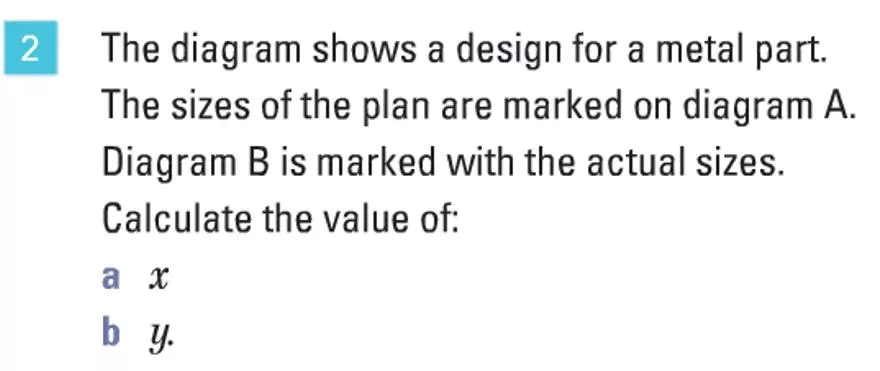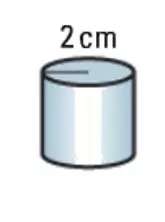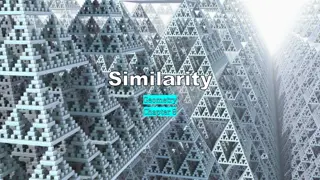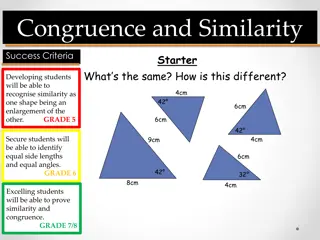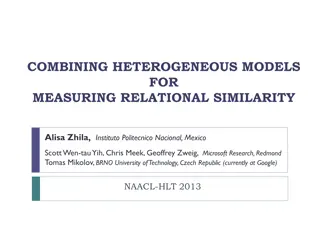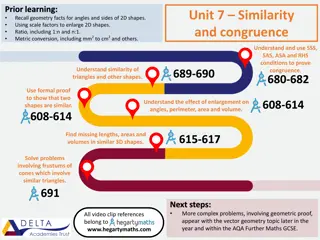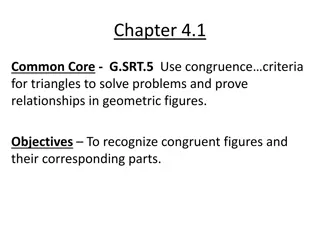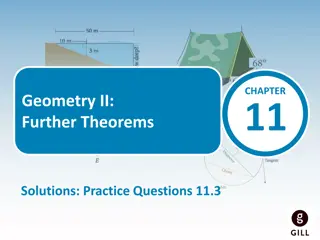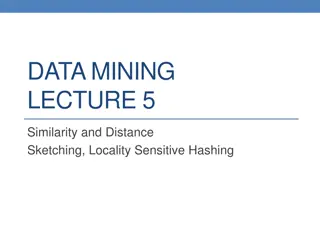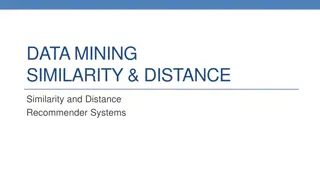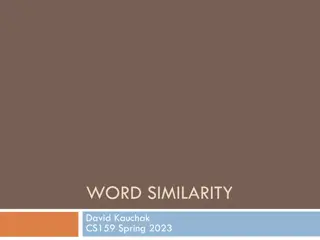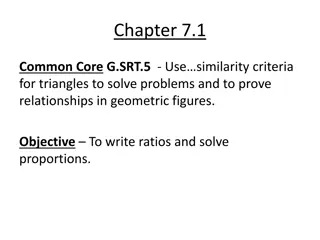Understanding Similarity and Congruence in Geometry
The difference between congruence and similarity lies in how shapes are compared. Congruent shapes are identical in size and shape, with equal side lengths and angles. Similar shapes have proportional side lengths and equal angles, appearing alike but not identical. Scaling factors play a crucial role in determining the relationship between areas and lengths of these shapes.
Download Presentation

Please find below an Image/Link to download the presentation.
The content on the website is provided AS IS for your information and personal use only. It may not be sold, licensed, or shared on other websites without obtaining consent from the author. Download presentation by click this link. If you encounter any issues during the download, it is possible that the publisher has removed the file from their server.
E N D
Presentation Transcript
What is the difference between congruence and similarity? In your own words, write down what the difference is between similar and congruent shapes.
How many of these points did you correctly identify? Congruent shapes are exactly the same, meaning that their side lengths are the same and their interior/exterior angles are the same. You can create a congruent figure by rotating, translating, or reflecting the original. Similar shapes look the same but their corresponding side lengths are proportional to each other and their interior/exterior angles are the same. You can create a similar figure by enlarging the original figure (making it smaller or larger by a scale factor).
24cm2 6cm2 Find the area of each of the triangles above. What do you notice?
D A 24cm2 6cm2 B C E F The Linear Scale Factor is found by dividing one of the sides of the larger shape by the corresponding side of the smaller shape. ?? ??=?? ?? ??=? ?? ??=? ?????? ????? ?????? = ? ?= ? ?= ? ?= ? Discuss: how could we find an Area Scale Factor? What do you think it might be?
D A 24cm2 6cm2 B C E F The Area Scale Factor is found by dividing the area of the larger shape by the area of the smaller shape. ???? ?? ??? ???? ?? ???=?? ???? ????? ?????? = ? ?????? ????? ?????? = ? ?= ? Discuss: Is there a connection between the Linear Scale Factor and the Area Scale Factor? What do you think it might be? Area Scale Factor = (Linear Scale Factor)2 Why do you think that might be?
Area Scale Factor = (Linear Scale Factor)2 How much bigger is Square B compared to Square A? Square A Square B 10cm 5cm 5cm 10cm A B SF Length: 5cm Area: 25cm2 10cm 2 100cm2 22 = 4 The lengths of Square A have doubled in both dimensions, first the length is doubled, then the width. Multiplying by the same number twice in succession is the same as squaring: 2 2 = 2
On your whiteboards: Is there another method?
On your whiteboards: ??.? ?? ??? = = ?.? ??? = ?.??= ??.?? ???? ?? ? = ???? ?? ? ??? ???? ?? ? = ??? ??.?? = ????.????
2 1 3
2 1 3
Exam Question A company makes monsters. The company makes small monsters with a height of 20 cm. A small monster has a surface area of 300 cm2. The company also makes large monsters with a height of 120cm. A small monster and a large monster are mathematically similar. Work out the surface area of a large monster.





